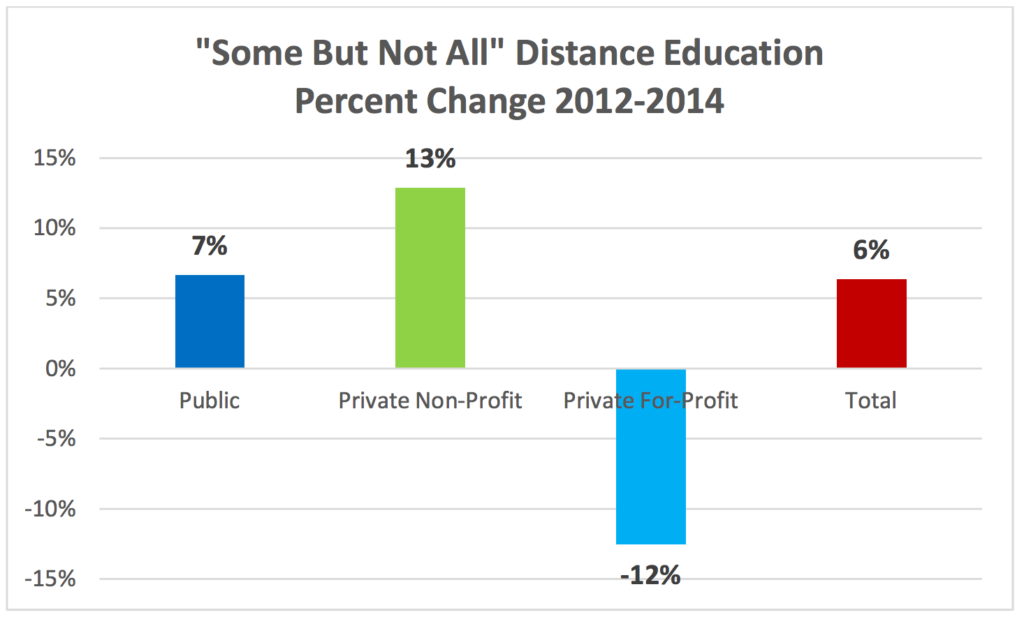Mike Caulfield wrote a post yesterday about a new Blackboard report on design findings regarding online students. The focus of Mike’s post was that people often assume that the norm for an “online” student is taking all courses online, when in fact it is more common for students to take some courses online and some face-to-face (what Mike calls “Mixed-Course”). This distinction is important:
What shocks some people reading this, I think, is that online students would have face-to-face courses as a comparison or option, or that they would be consciously choosing between online and face-to-face in the course of a semester. But this is the norm now at state universities and community colleges; it’s only a secret to people not in those sorts of environments.
I agree that this is an important topic, so let’s look at the data in more detail (and for those wondering if you can connect to Tableau Public to edit online data visualizations while flying, the answer is yes if you’re patient). The best source of information is the IPEDS database, with the most recent data for Fall 2014. WCET put out an excellent report analyzing the distance education data in IPEDS – more on that later. Both IPEDS and WCET use the term “Some but not all” in the same manner as “Mixed-Course”. Based on overall data combining undergraduate and graduate students, Mike is right that more students are Mixed-Course than they are Fully-Online – 2.926 million vs. 2.824 million.

But this comparison varies by sector and by degree type as you can see below.

Some notes:
- For graduate students in all sectors, Fully-Online is more common than Mixed-Course;
- For private not-for-profit and for for-profit sectors, Fully-Online is more common than Mixed-Course;
- The predominant case where Mixed-Course is most common is for public institutions – both 4-year and 2-year – for undergraduate degrees (as Mike pointed out); and
- Due to the large size of those two public sectors – combined they represent 75% of all enrollments in the US – the overall numbers slightly favor Mixed-Course.
What about growth measures? IPEDS only began collecting this level of distance education enrollment data for Fall 2012, and I have worked with WCET to show some data issues in IPEDS, particularly for Fall 2012. So be aware of some noise in these measurements. However, the WCET report shows overall growth trends in their report, and Fully-Online (exclusively DE) is actually growing slightly faster than Mixed-Course – 225 thousand vs. 178 thousand. Note that WCET combined public 4-year and public 2-year into one bucket.


If you’d like to explore the data in more detail, see this interactive chart.
[…] One of the comments to my post last night came from Karen Swan from U Illinois Springfield, where she gave a very interesting teaser for upcoming research publication. […]